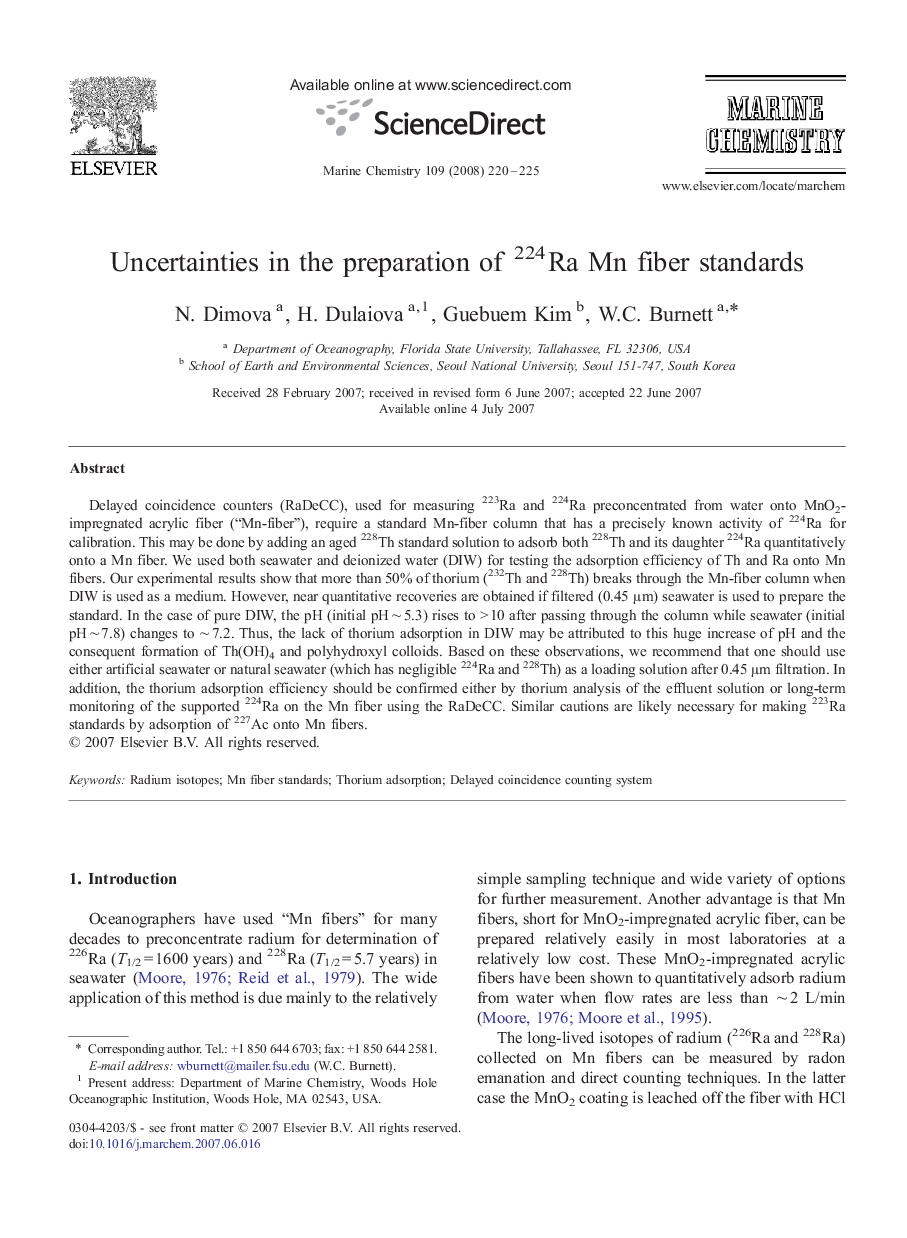| Article ID | Journal | Published Year | Pages | File Type |
|---|---|---|---|---|
| 1263486 | Marine Chemistry | 2008 | 6 Pages |
Delayed coincidence counters (RaDeCC), used for measuring 223Ra and 224Ra preconcentrated from water onto MnO2-impregnated acrylic fiber (“Mn-fiber”), require a standard Mn-fiber column that has a precisely known activity of 224Ra for calibration. This may be done by adding an aged 228Th standard solution to adsorb both 228Th and its daughter 224Ra quantitatively onto a Mn fiber. We used both seawater and deionized water (DIW) for testing the adsorption efficiency of Th and Ra onto Mn fibers. Our experimental results show that more than 50% of thorium (232Th and 228Th) breaks through the Mn-fiber column when DIW is used as a medium. However, near quantitative recoveries are obtained if filtered (0.45 μm) seawater is used to prepare the standard. In the case of pure DIW, the pH (initial pH ∼ 5.3) rises to > 10 after passing through the column while seawater (initial pH ∼ 7.8) changes to ∼ 7.2. Thus, the lack of thorium adsorption in DIW may be attributed to this huge increase of pH and the consequent formation of Th(OH)4 and polyhydroxyl colloids. Based on these observations, we recommend that one should use either artificial seawater or natural seawater (which has negligible 224Ra and 228Th) as a loading solution after 0.45 μm filtration. In addition, the thorium adsorption efficiency should be confirmed either by thorium analysis of the effluent solution or long-term monitoring of the supported 224Ra on the Mn fiber using the RaDeCC. Similar cautions are likely necessary for making 223Ra standards by adsorption of 227Ac onto Mn fibers.
